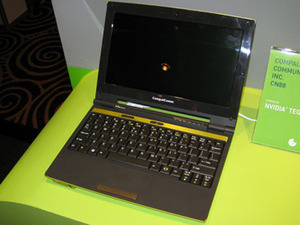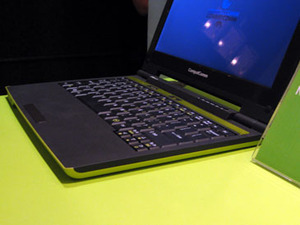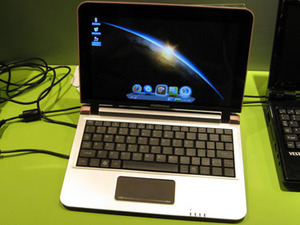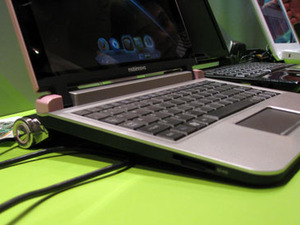
Nvidia Tegra: Small is beautiful
In what was an uncharacteristic move for Nvidia, the company chose to move its focus away from big, badass GPUs to much smaller pastures; namely Tegra and Ion. Neither are particularly new concepts, but Nvidia was keen to tell the world how far it has come since the last time it talked about either product.Tegra, first introduced last year, is a complete system on a chip barely bigger than a USB thumb drive – in fact, it fits into a SO-DIMM slot, enabling OEMs to make easily upgradeable products based on Nvidia’s new platform. This was arguably the biggest news of the show, as Nvidia plans to introduce a new class of always-on, always connected devices that sit in between a smartphone and a netbook.
Indeed, Nvidia CEO Jen-Hsun Huang called it “one of the most ambitious investments in the history of our company”, saying that it had cost Nvidia $500 million and taken over five years to design. We could argue all day about why it is ambitious given the increasing pressure it is facing from both Intel and AMD on all fronts – in the past, the company has always innovated its way out of trouble and this could be that product that gets it out of a very tricky spot.
Nvidia’s system on a chip has been designed to be frugal with power, consuming just 1W; “it’s very clear that the reduction in power consumption is what enabled progress from mainframes to PCs to laptops,” reasoned Huang before going onto say that reducing power by a factor of 100x is what is required to enable designers to create new form factors.
bit-tech’s Alex Watson was at the press conference, where Nvidia demoed the chip playing back the Star Trek trailer at 720p with no sign of stuttering and also browsed Flash-heavy websites. Nvidia also announced that it was working with Adobe to deliver GPU-accelerated Flash very soon – no explicit timeframe was given though, unfortunately.
In terms of battery life, Tegra is going to shake the industry up – how does 25 days of continuous music playback sound? Add that to the ten hours of HD video playback and the ability to play Quake at 46 frames per second and you’ve got a phenomenally powerful device with masses of battery life. It was at this point that Huang made an interesting point when he compared the way people use PCs and their mobile phones – the PC is generally powered up when needed, while phones are left on all the time.
His claim was that Tegra’s design was frugal enough with power that with a ‘netbook-style’ battery it could be used in a similar manner to a phone – left on and always at your disposal. That could create a completely new usage model and this is, frankly, what a ‘netbook’ should be about – a full Internet browsing experience in an instant-on device.
The devices, of which many have been shown, will mainly focus on a 7in form factor, but there will be some 10.1in models as well – all will feature a 1,024 x 600 display resolution in order to ensure that ‘full’ Internet browsing experience. They will be sold through the Telecom companies with a 3G data contract – some may end up being free, but Nvidia said that nearly every device should be less than $99 with a 3G data contract.
Huang finished by painting an ambitious, but bright future for Tegra, saying: “We believe that when we can bring computing power down to less than 1W, we can open up the industry to billions of platforms. You car will turn into a computer, your TV will, your picture frame will, your clock radio will. Everything will have a computer inside it.”

MSI MPG Velox 100R Chassis Review
October 14 2021 | 15:04












Want to comment? Please log in.